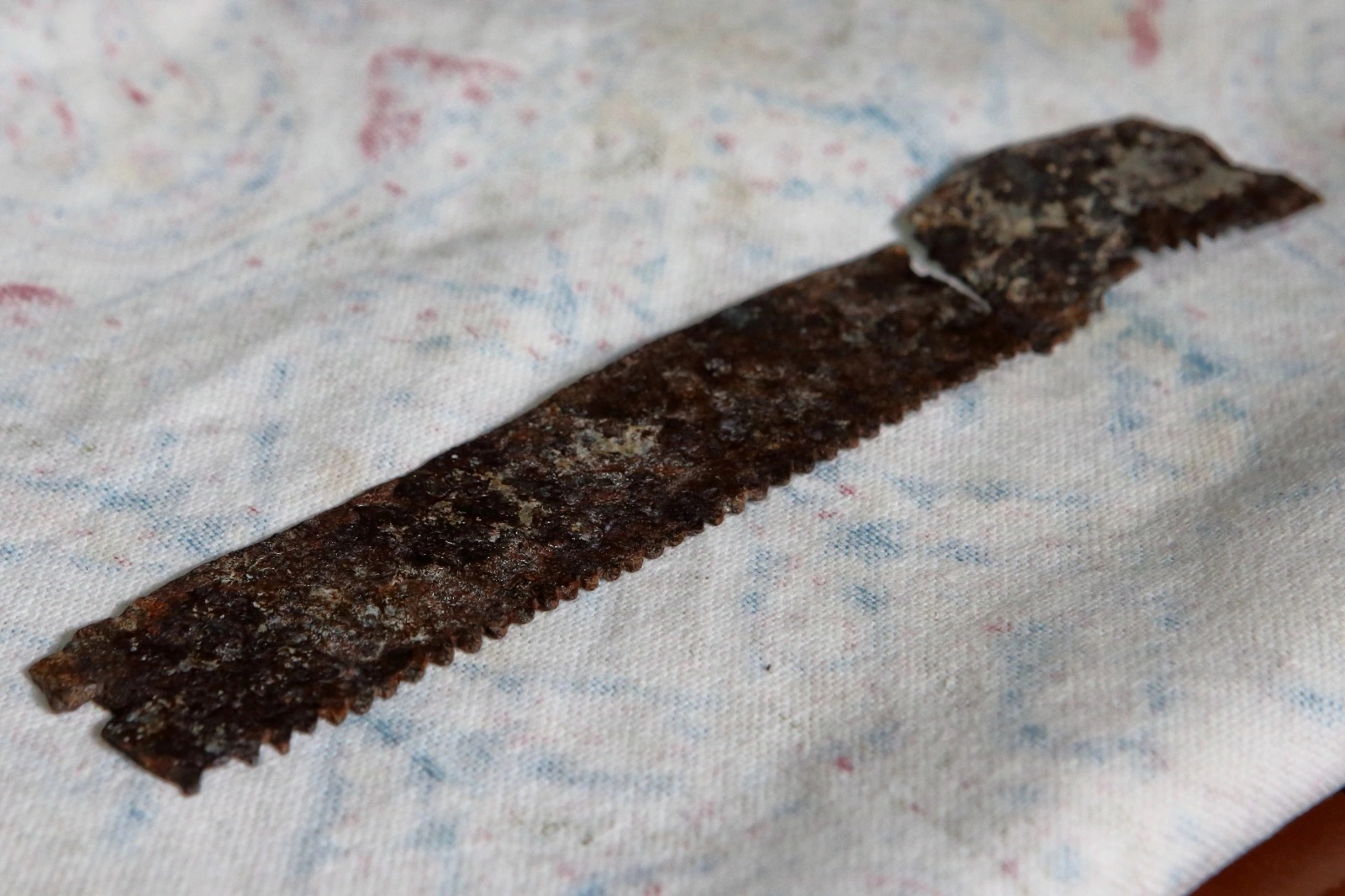The German Archaeological Institute’s excavation of the ancient Hittite capital of Hattusa has unearthed a rare iron saw dating to the 3rd century B.C. It is the first saw from this period discovered in Anatolia.
Professor Andreas Schachner, who leads the excavations, told Anadolu Agency (AA) that the iron of the saw was thicker than contemporary saws, but otherwise, it is very similar to the ones used today.
“This shows us that humans do not simply modify working tools,” he said.
Approximately eight inches long, the rectangular saw blade has teeth on one long edge that show extensive evidence of wear and tear. It was found on the northwestern slope of the large castle area in a building from the Galatian period. The building was in use around 2,250 years ago when central Anatolia was occupied by the descendants of the Celts who had invaded Greece in 278 B.C. There are few known examples of saws from this era; later Roman saws are more common.
Only the iron blade of the saw has survived. Mounting holes on both sides indicate it had a semicircular handle, likely made of a wood, that the carpenter would have gripped when moving the blade back and forth.

The demigod “Humbaba” is best known from various versions of the Epic of Gilgamesh, and additionally Hurrian and Hittite adaptations.
He is invariably portrayed as the guardian of the CEDAR FOREST(!) to which Gilgamesh ventures with his companion Enkidu. Babylonian texts place the cedar forests in Lebanon.
🌲️ 🪚️ 🇱🇧
Notice, as *Christmas* is approaching: This piece of equipment looks indeed like some of the stuff that we occasionally use today. Traditionally, as we say, we “organize” a tree.
…maybe I should point out that we gave up the tradition to “organize” a tree long ago. Instead, we have an iron installation that we fill with TWIGS: The decorated end result looks like a tiny Christmas tree -with real twigs- and afterwards we burn those twigs, which we –nowadays– not even cut ourselves.
I wonder if all the teeth are in a straight line, or does each tooth have a slight bend to the right and the next to the left, and so on, like a more modern saw?
Not all modern saws have those ‘opposing’ teeth. If you want a thin kerf (gap made by the sawblade), you keep the teeth in-line.
That is true, many of my fine saws I have had for cutting plastic have had no offset, I just suspect that this was for something more chunky 😉
In the 3rd century B.C. someone lost their iron saw, I’ll bet that a big deal! It’s not like they could go to the hardware store and pick up another…
A saw blade from Celts from 2200 years ago, who lived where hittites lived 4000 years ago?
Yes. Celts, aka the Galatians, invaded Greece and Asia Minor in 279 B.C.